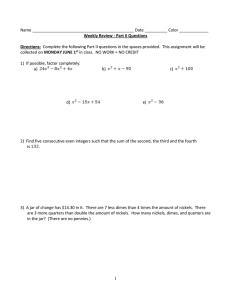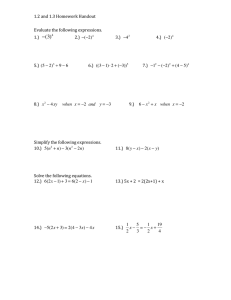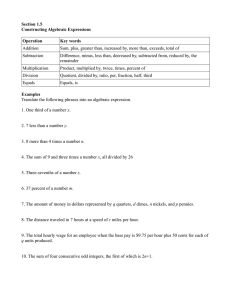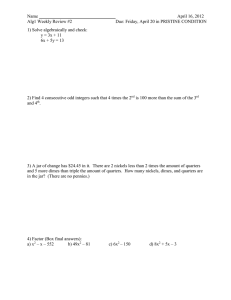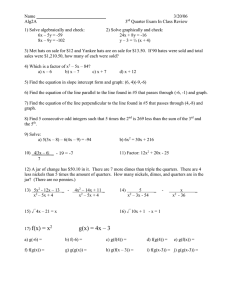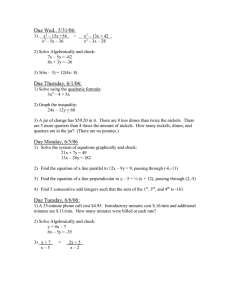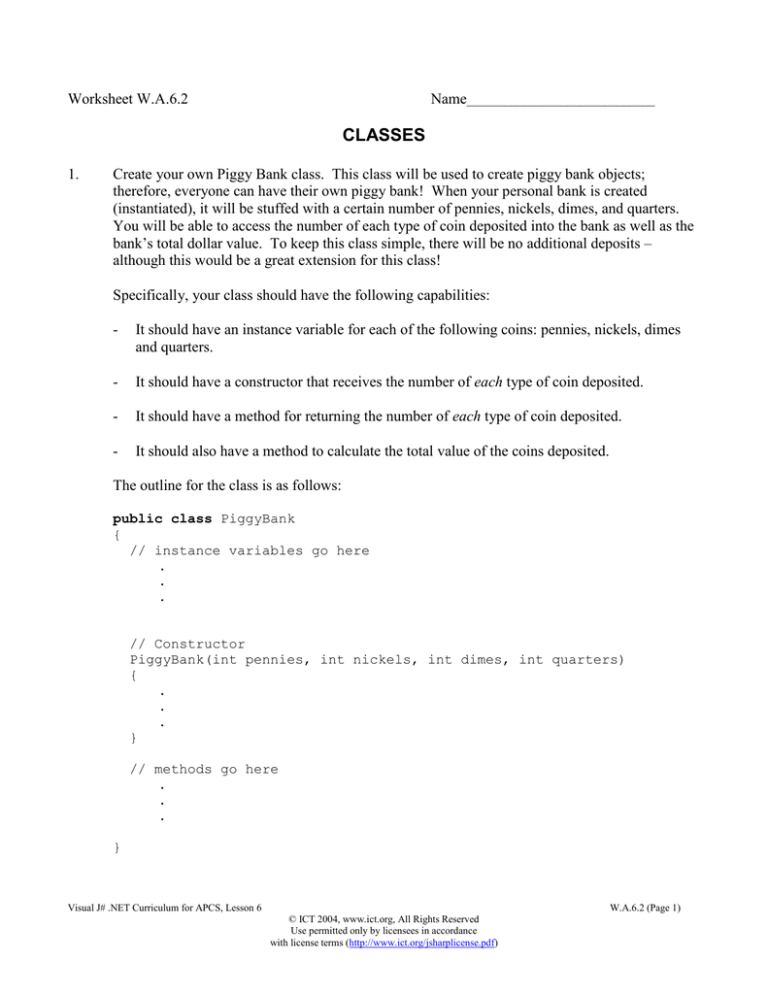
Worksheet W.A.6.2
Name______________________________
CLASSES
1.
Create your own Piggy Bank class. This class will be used to create piggy bank objects;
therefore, everyone can have their own piggy bank! When your personal bank is created
(instantiated), it will be stuffed with a certain number of pennies, nickels, dimes, and quarters.
You will be able to access the number of each type of coin deposited into the bank as well as the
bank’s total dollar value. To keep this class simple, there will be no additional deposits –
although this would be a great extension for this class!
Specifically, your class should have the following capabilities:
-
It should have an instance variable for each of the following coins: pennies, nickels, dimes
and quarters.
-
It should have a constructor that receives the number of each type of coin deposited.
-
It should have a method for returning the number of each type of coin deposited.
-
It should also have a method to calculate the total value of the coins deposited.
The outline for the class is as follows:
public class PiggyBank
{
// instance variables go here
.
.
.
// Constructor
PiggyBank(int pennies, int nickels, int dimes, int quarters)
{
.
.
.
}
// methods go here
.
.
.
}
Visual J# .NET Curriculum for APCS, Lesson 6
W.A.6.2 (Page 1)
© ICT 2004, www.ict.org, All Rights Reserved
Use permitted only by licensees in accordance
with license terms (http://www.ict.org/jsharplicense.pdf)
2.
Create a BankTester class that:
-
Prompts the user for the number of pennies, nickels, dimes, and quarters to be put in bank you'll need to import JSharpIO.*.
Instantiates a PiggyBank object using these coin amounts.
Calculates the total dollar value of the coins deposited and prints this to the screen.
Accesses the PiggyBank object to print the number of each type of coin deposited.
Visual J# .NET Curriculum for APCS, Lesson 6
W.A.6.2 (Page 2)
© ICT 2004, www.ict.org, All Rights Reserved
Use permitted only by licensees in accordance
with license terms (http://www.ict.org/jsharplicense.pdf)

